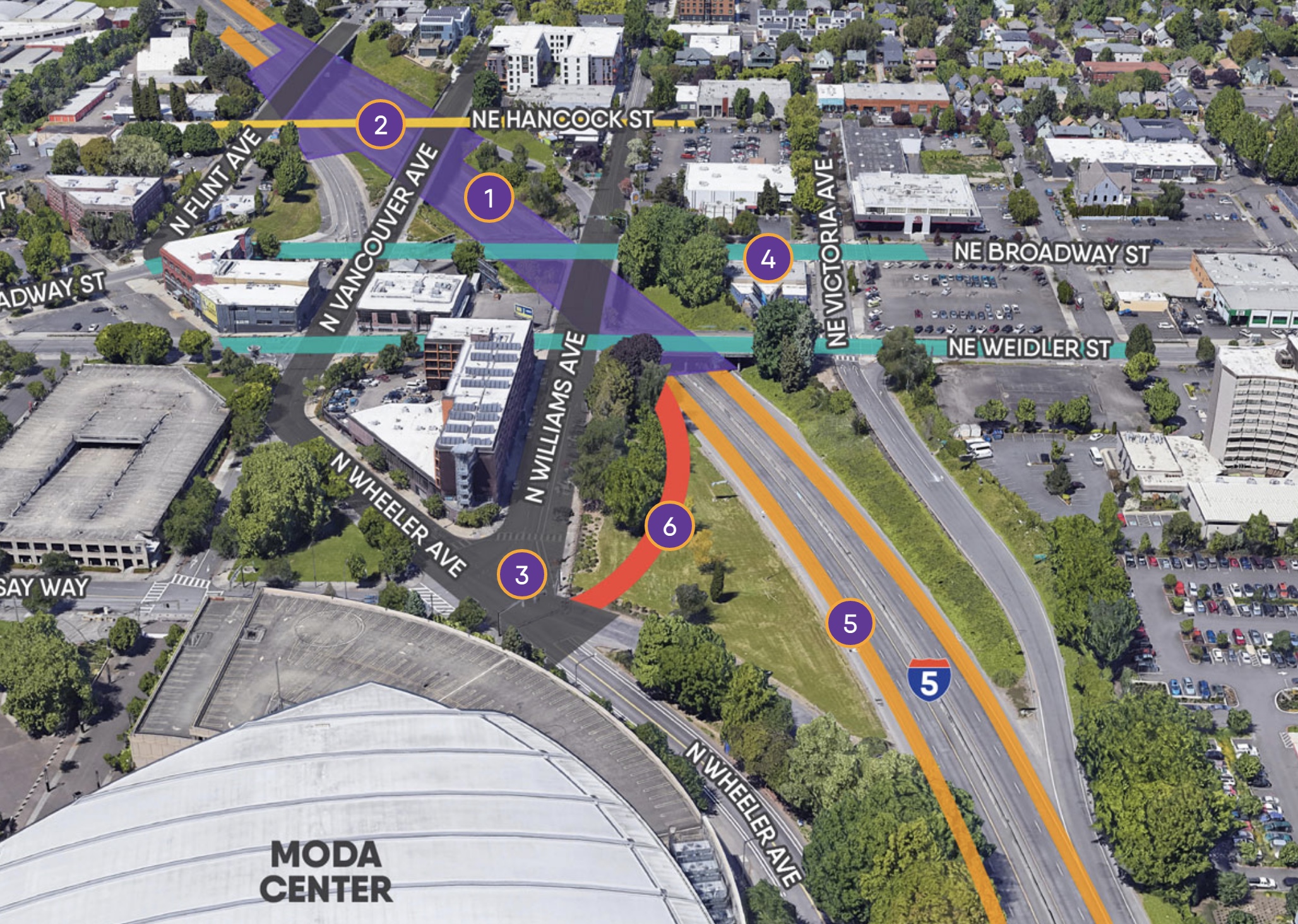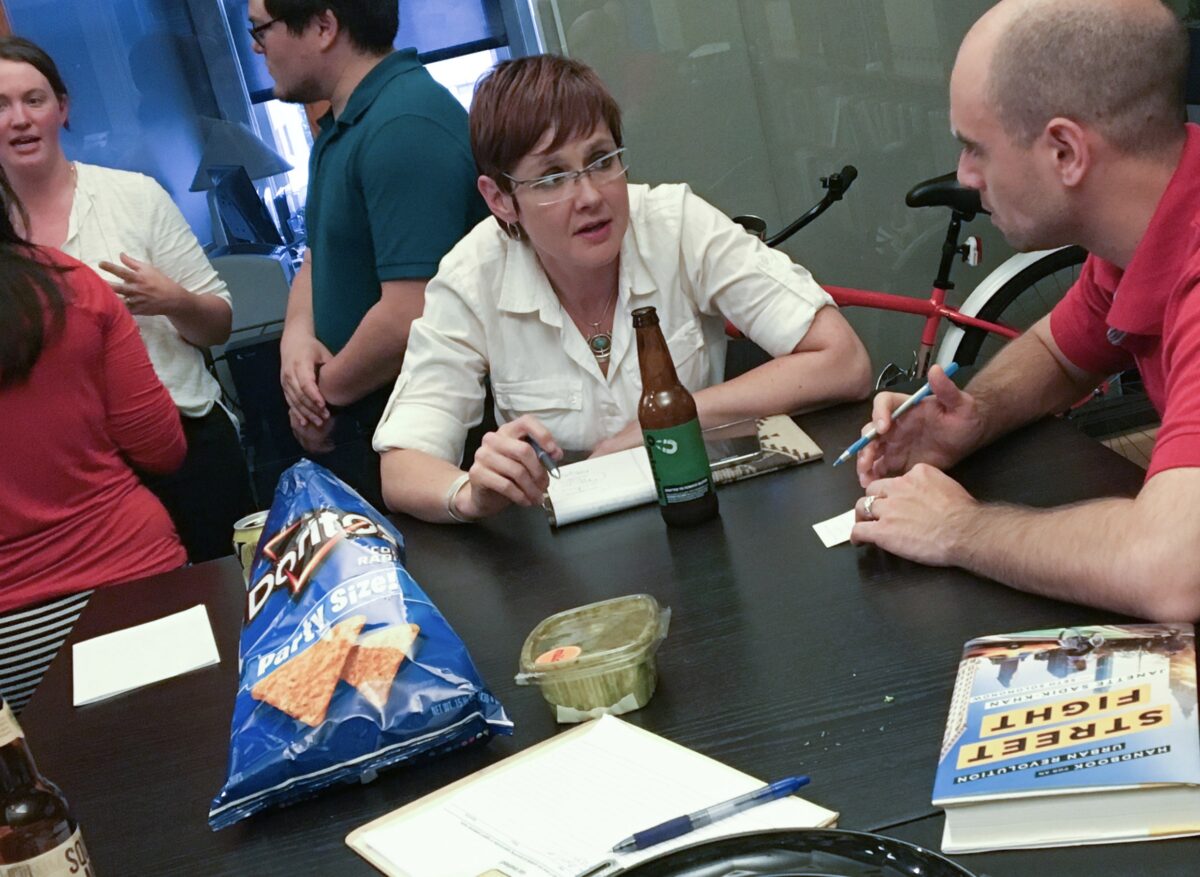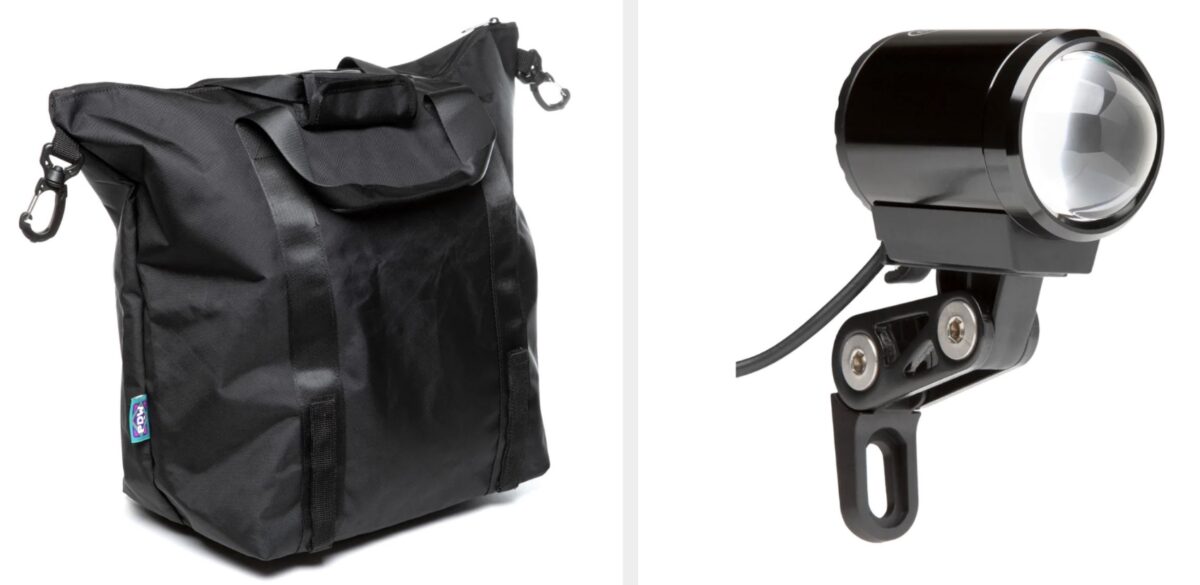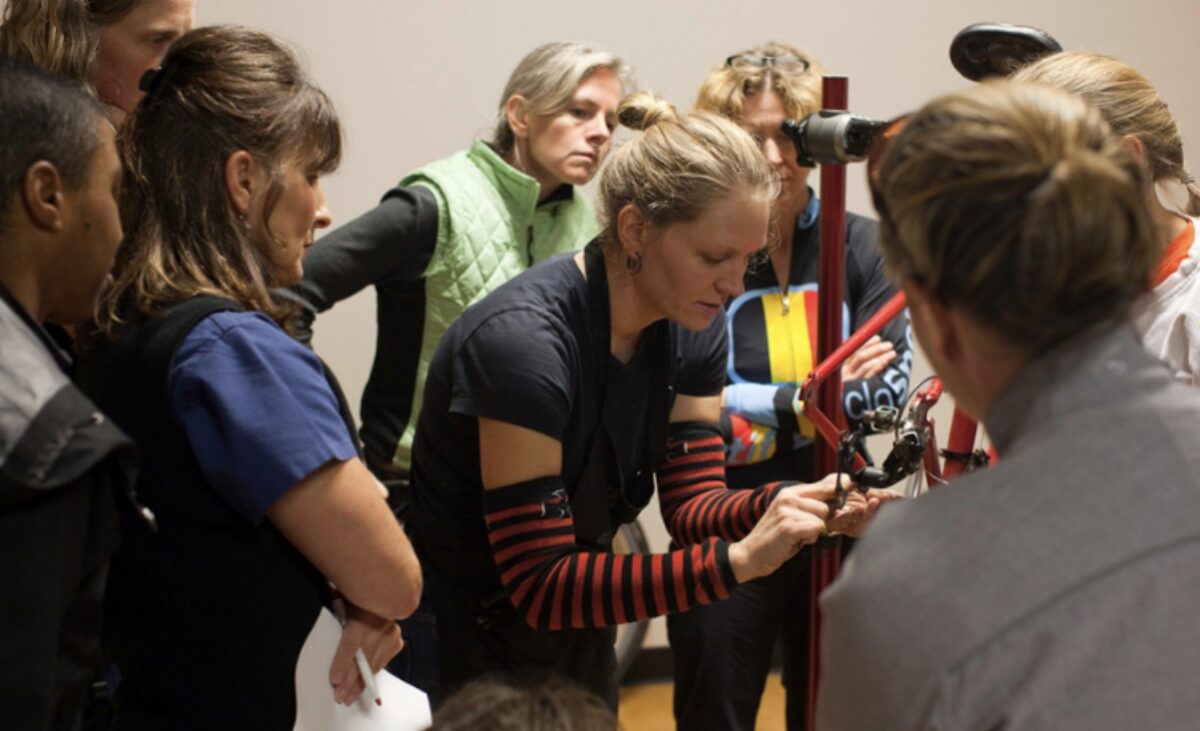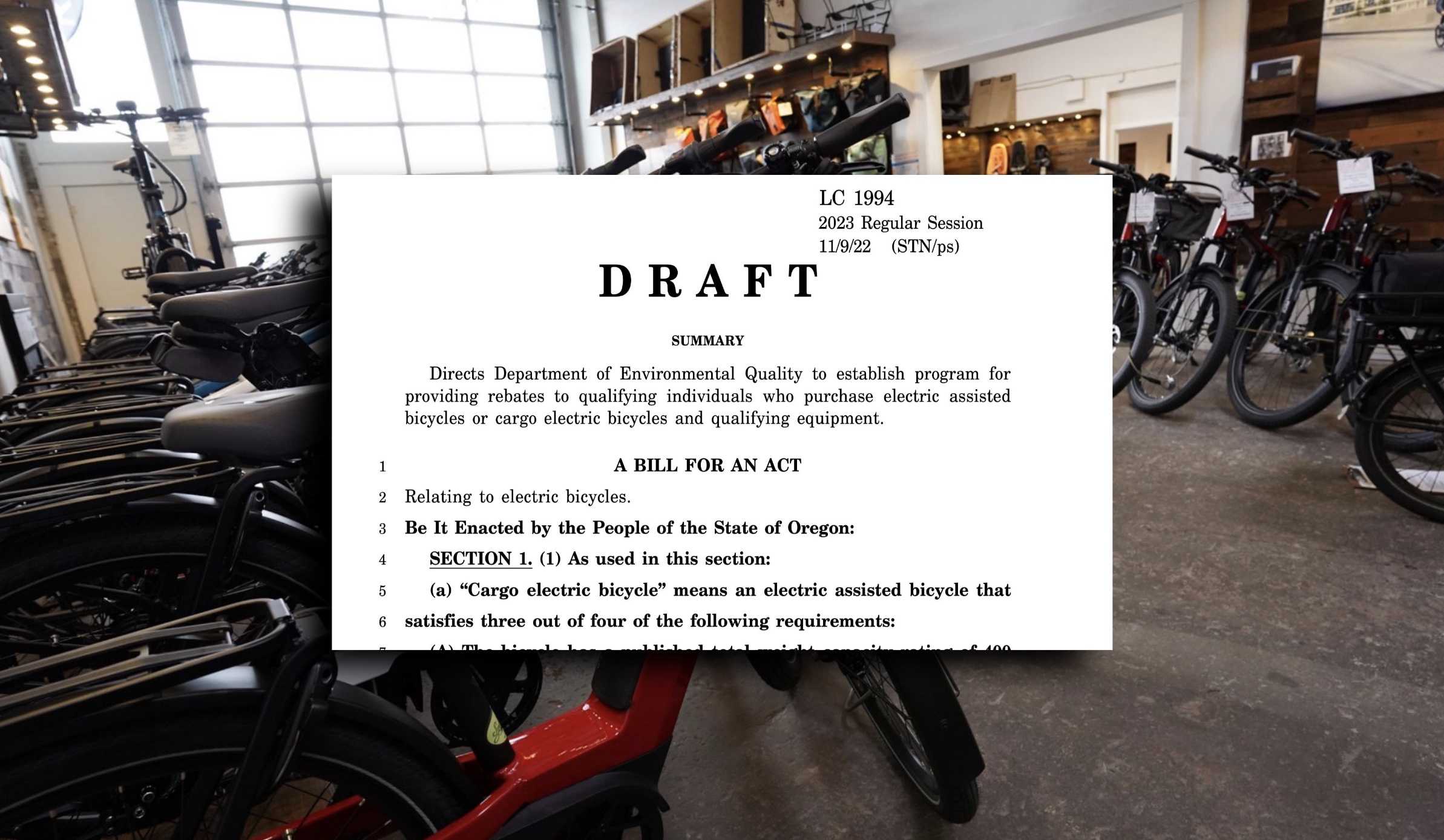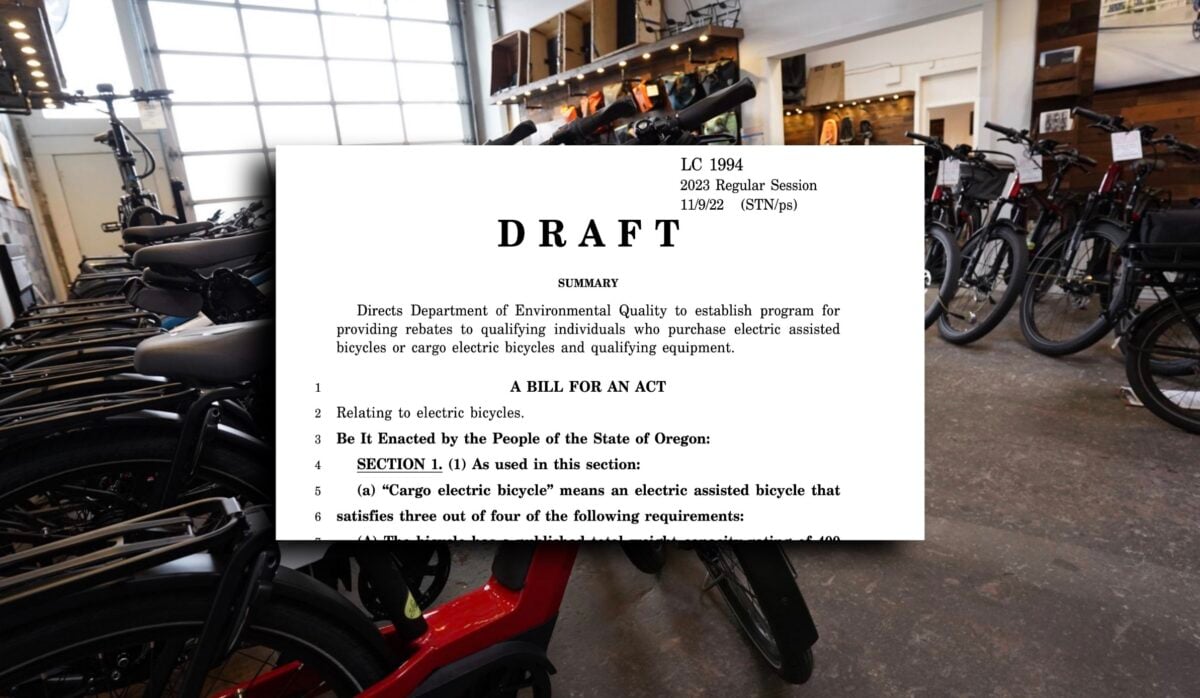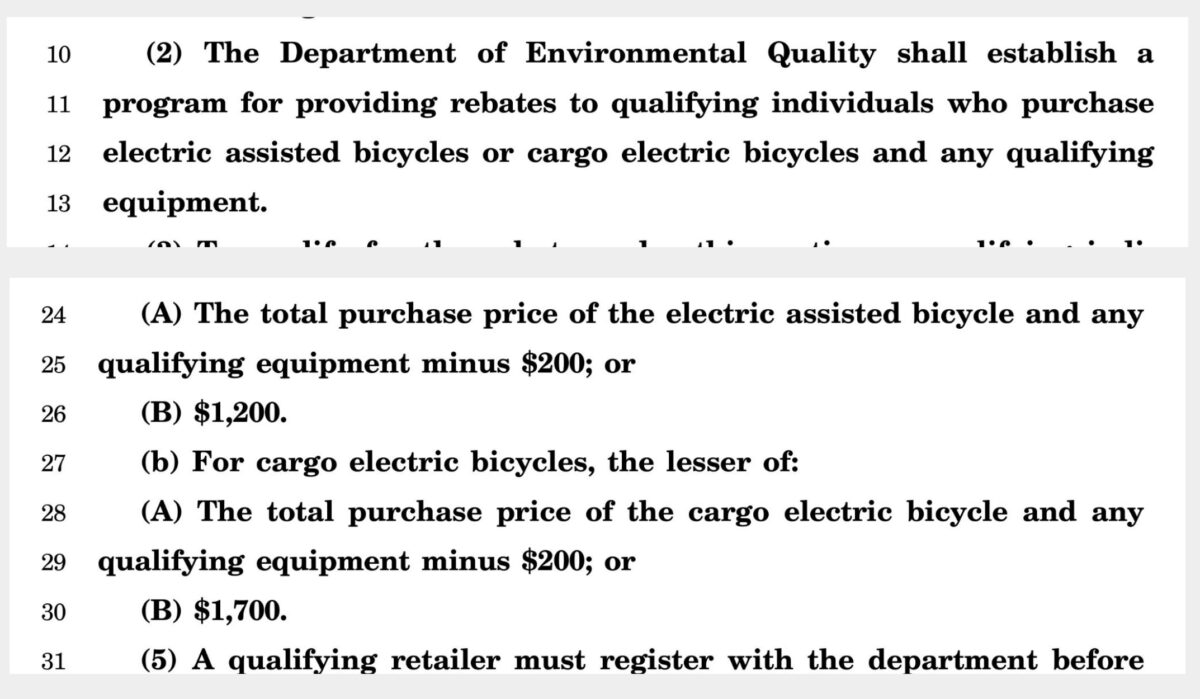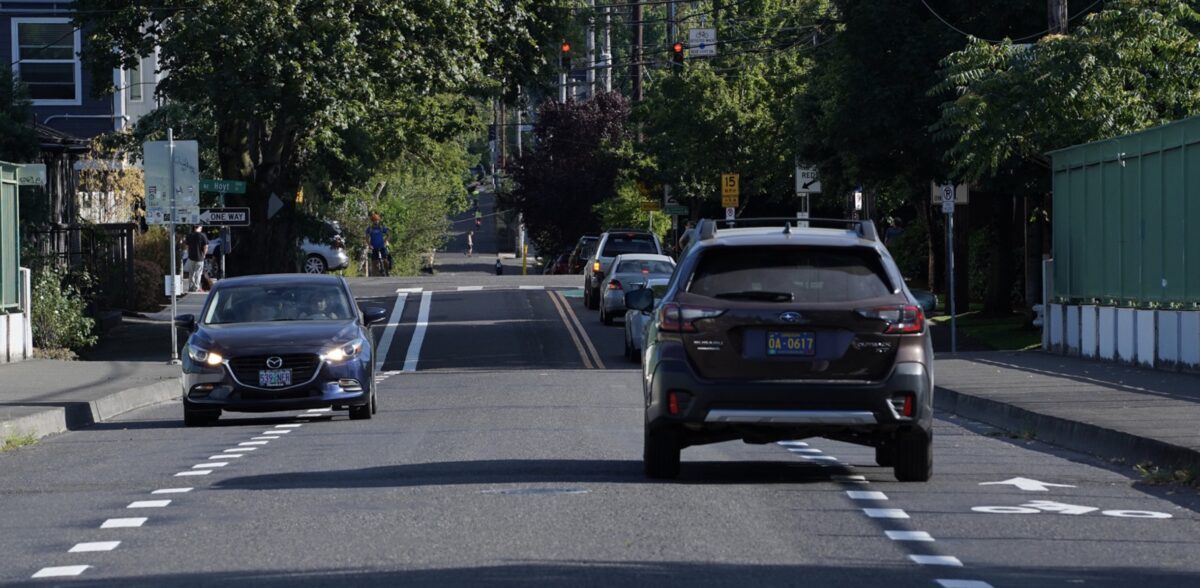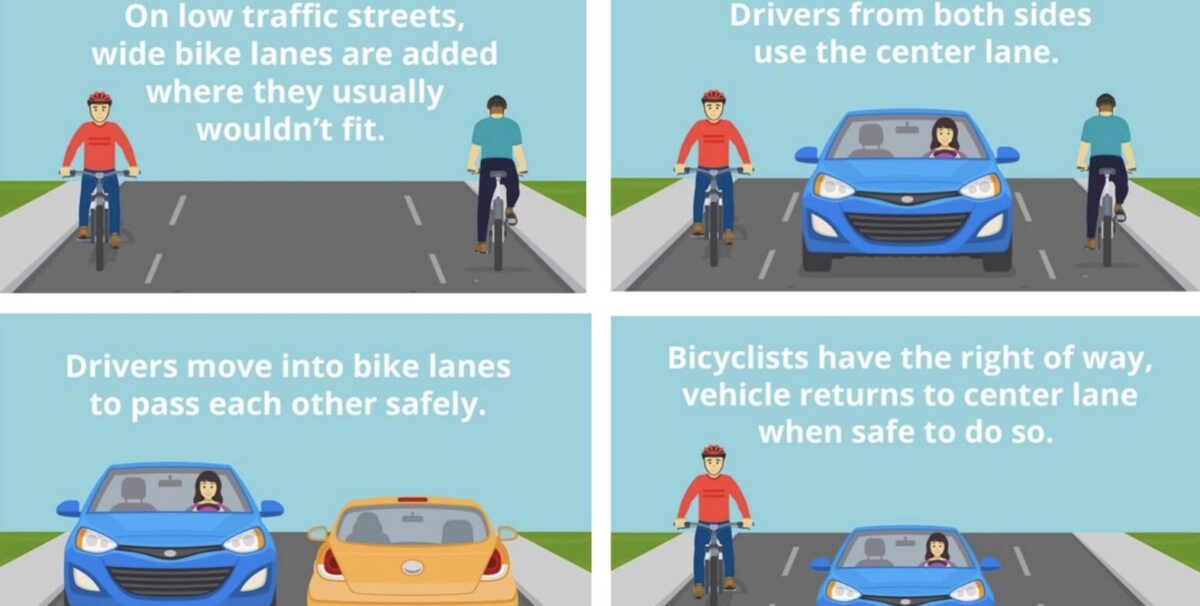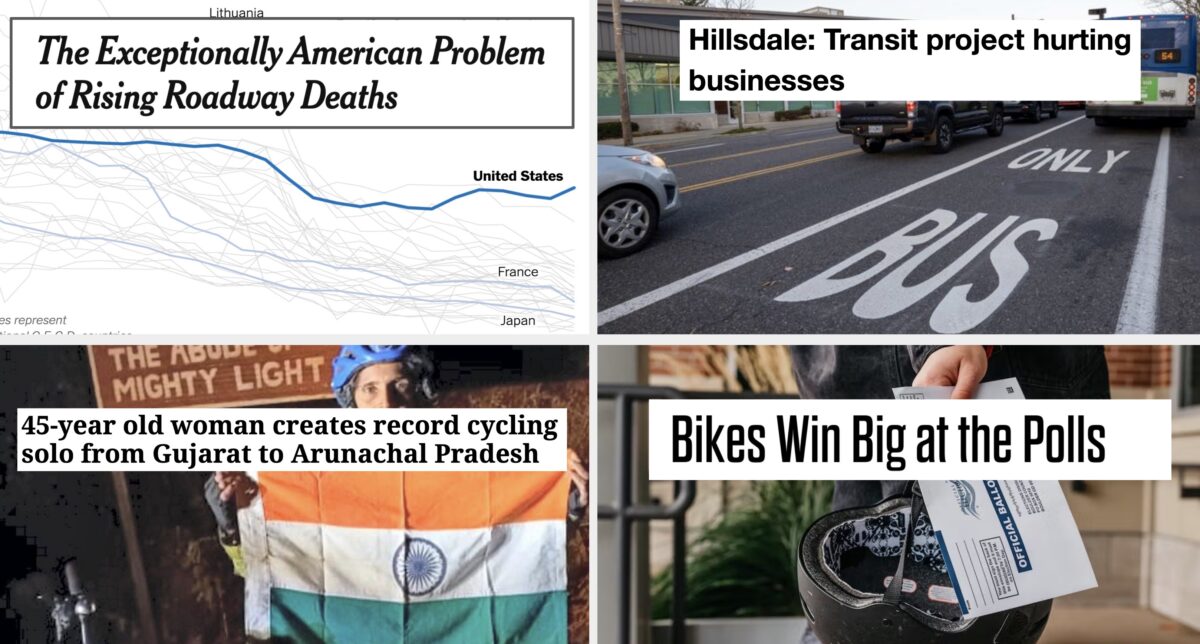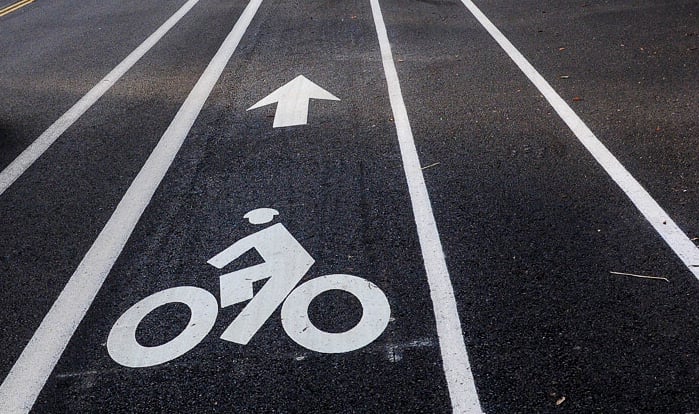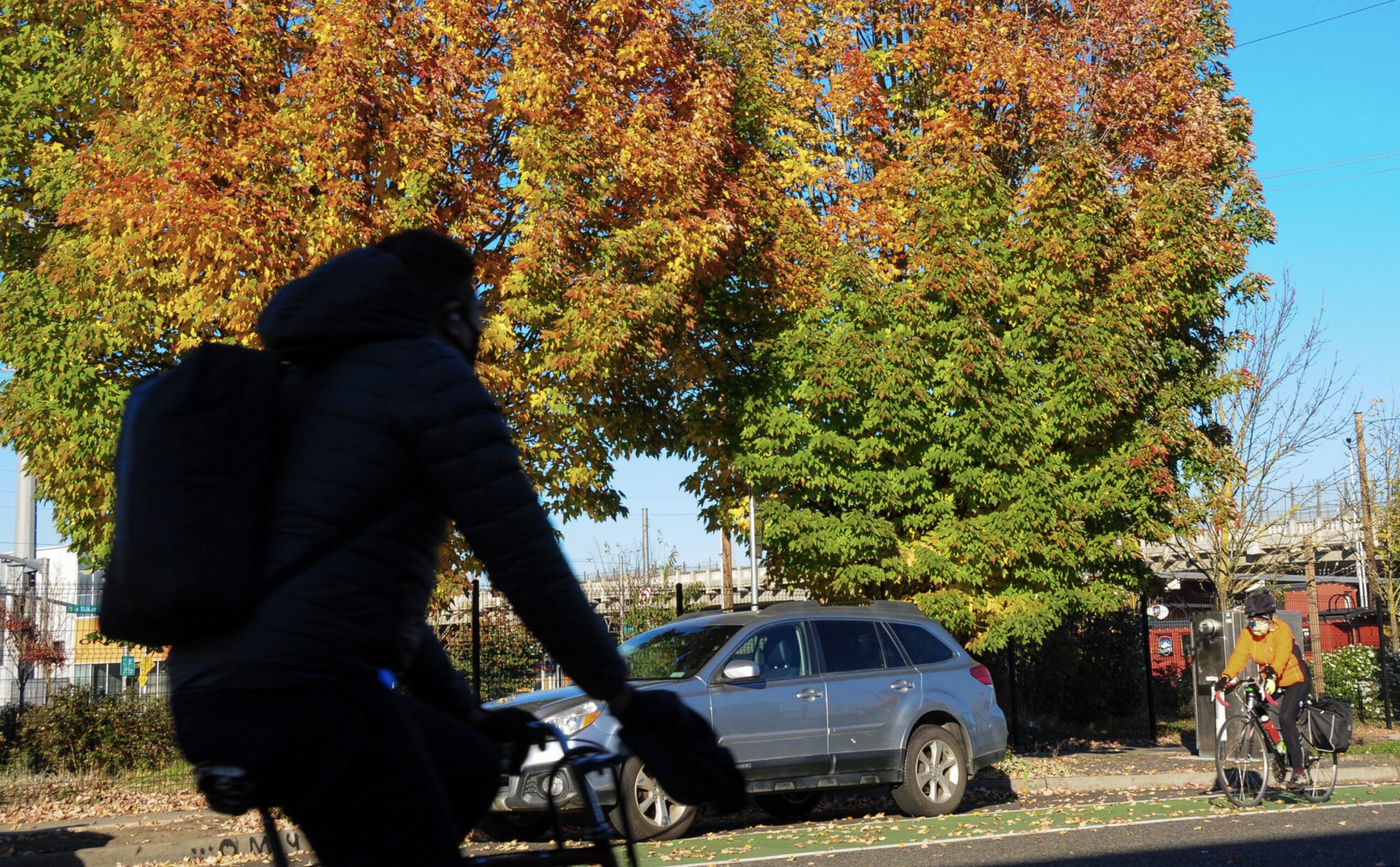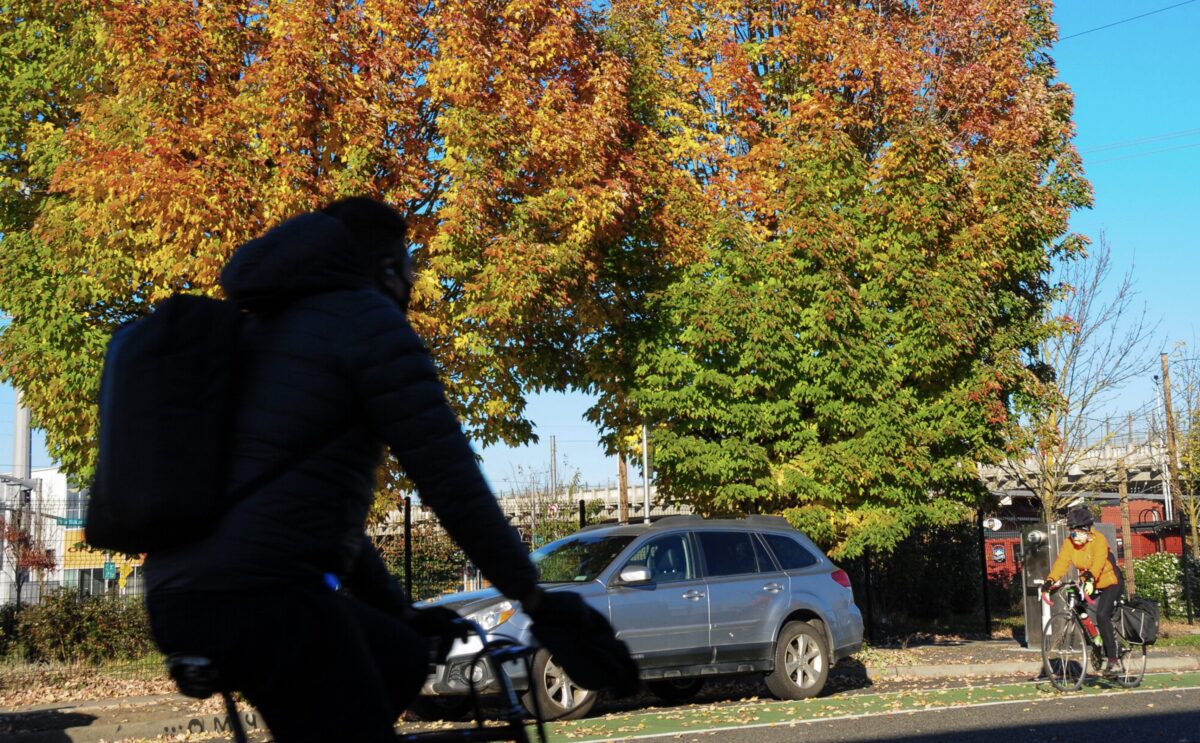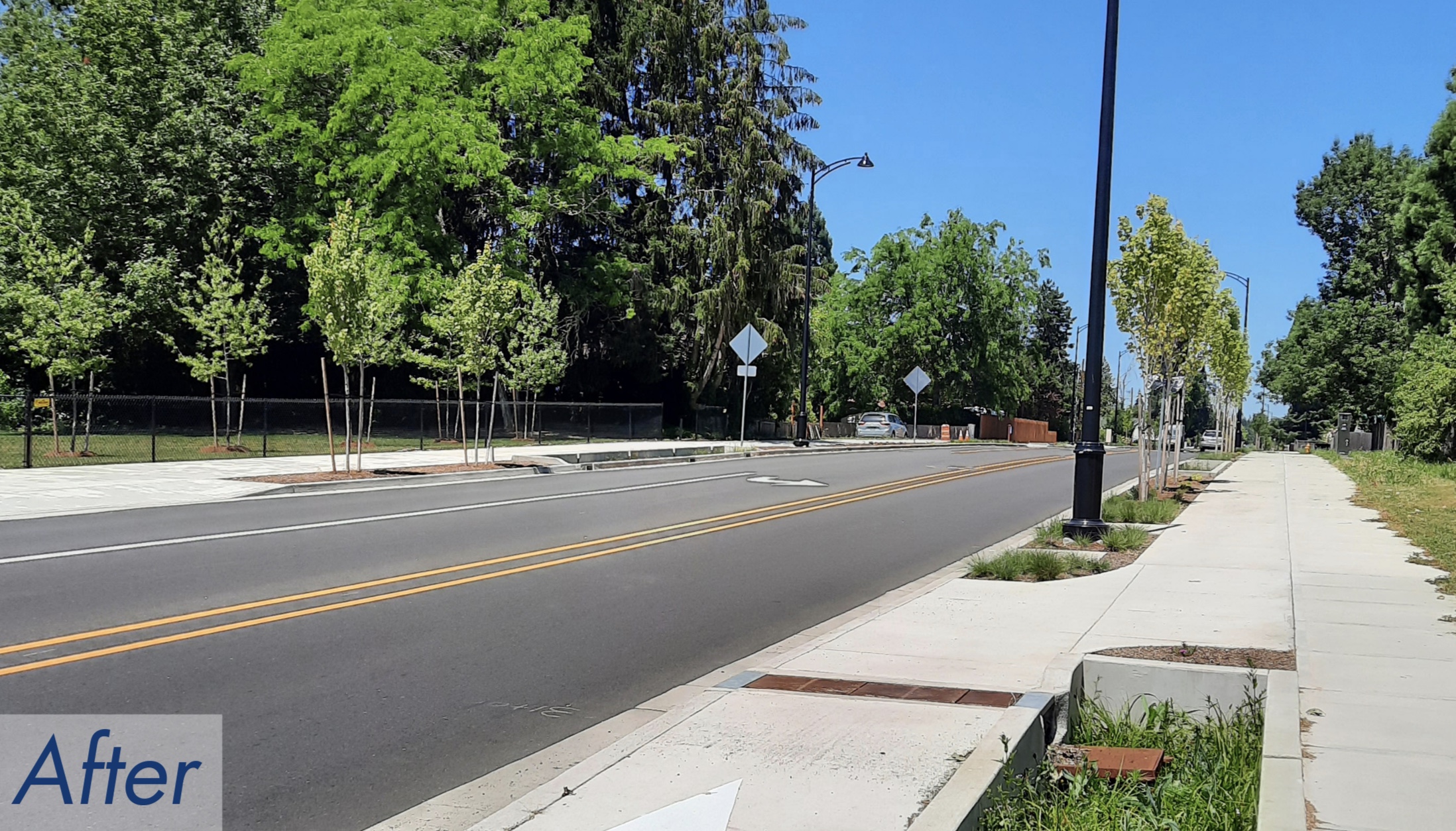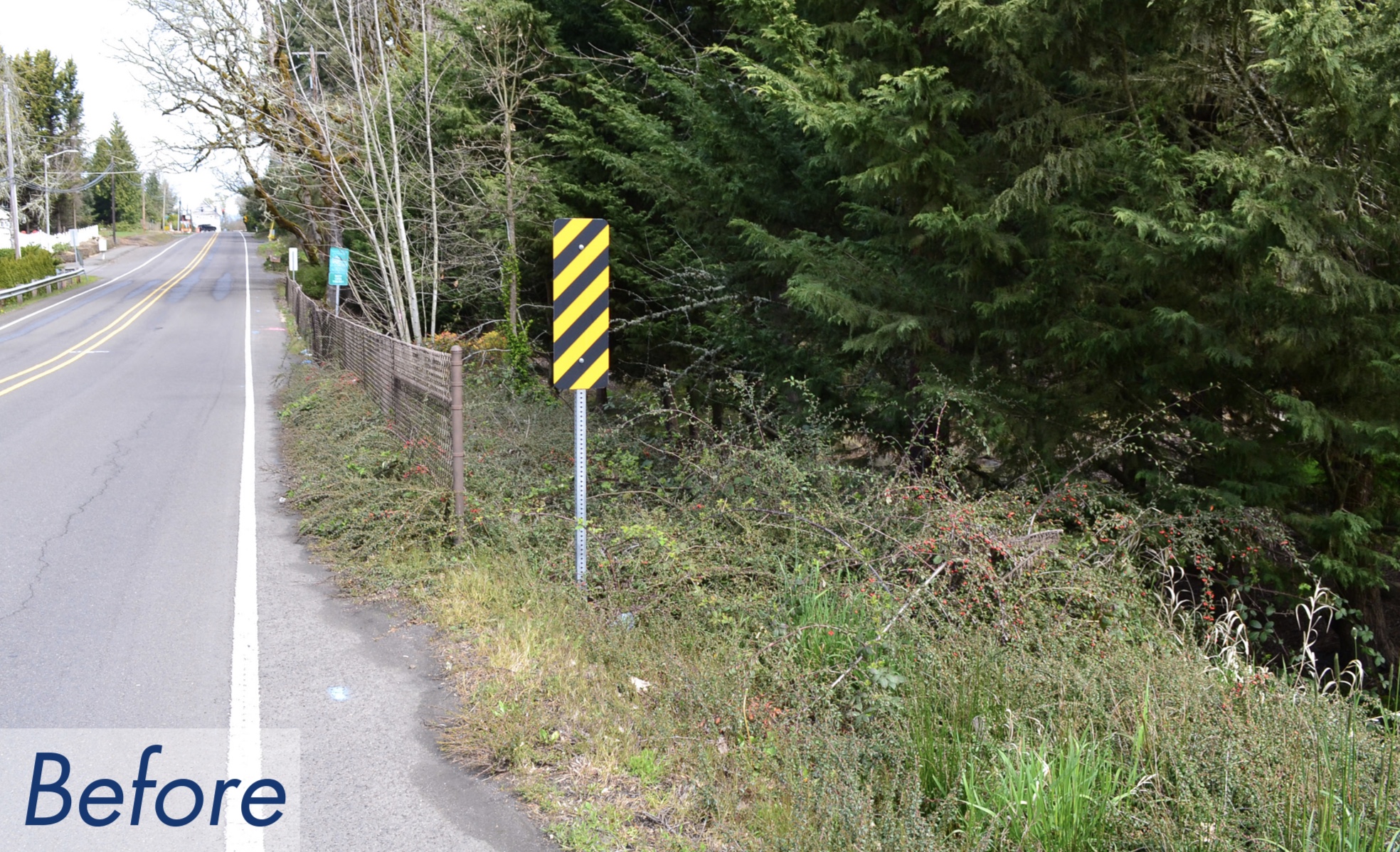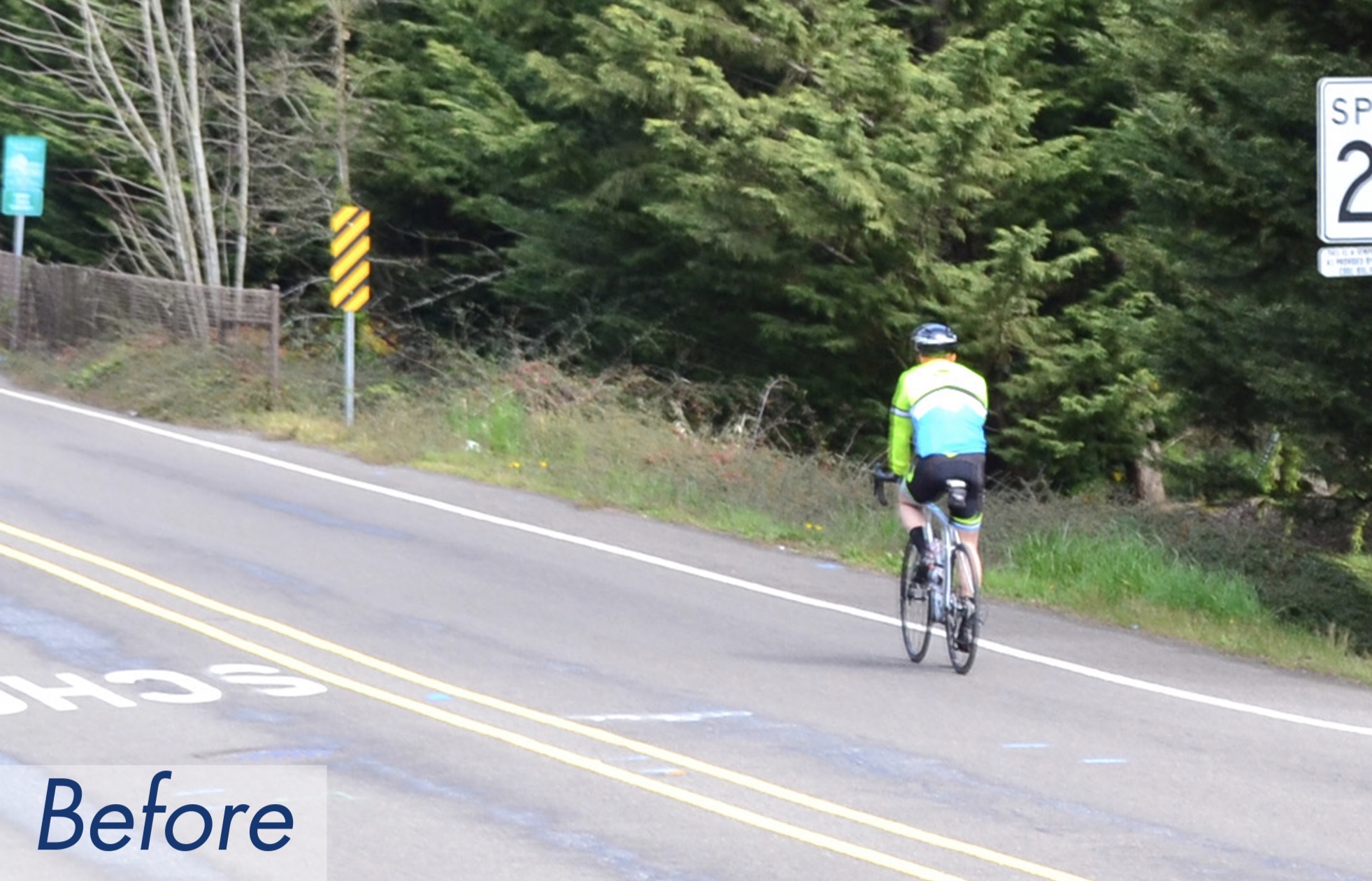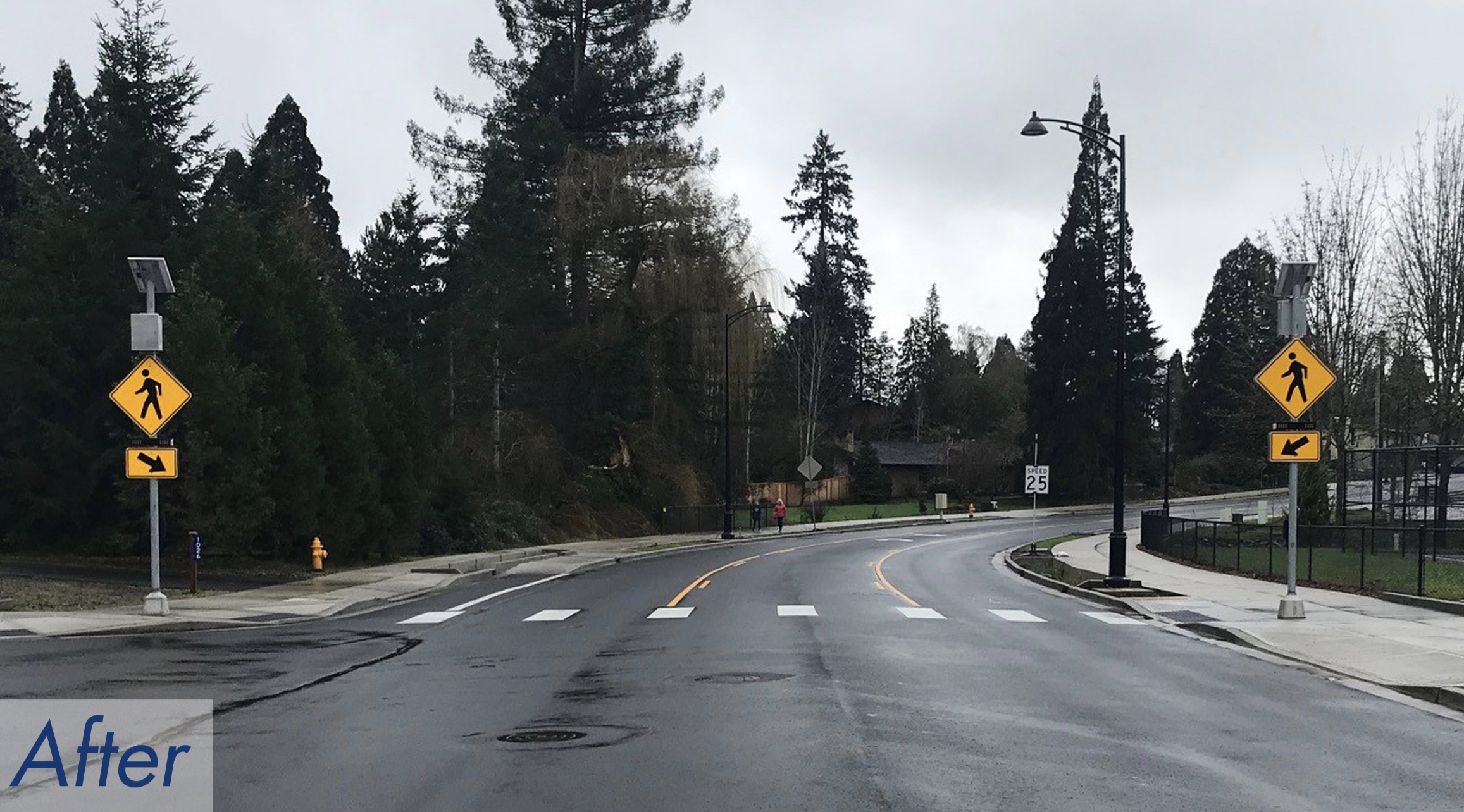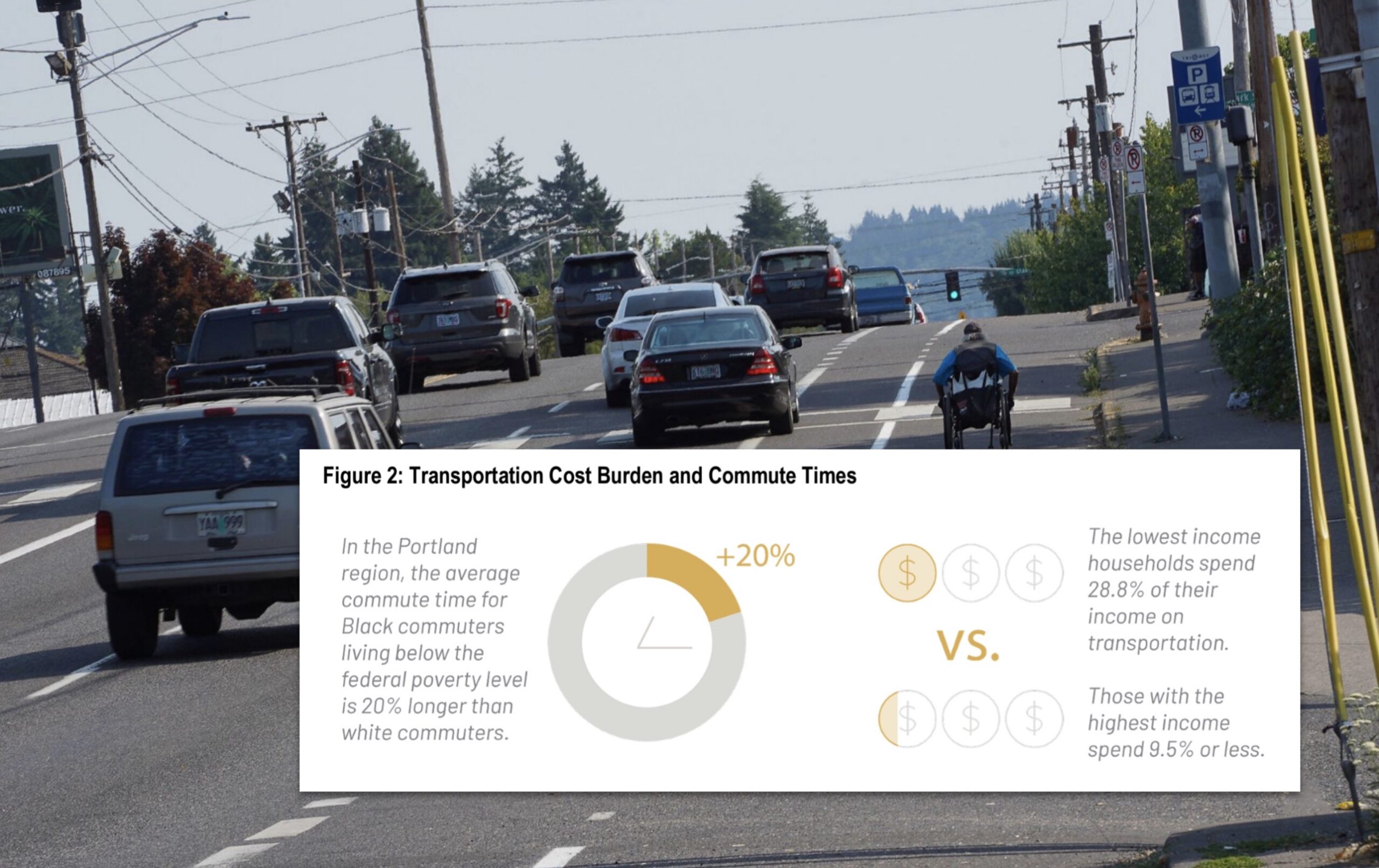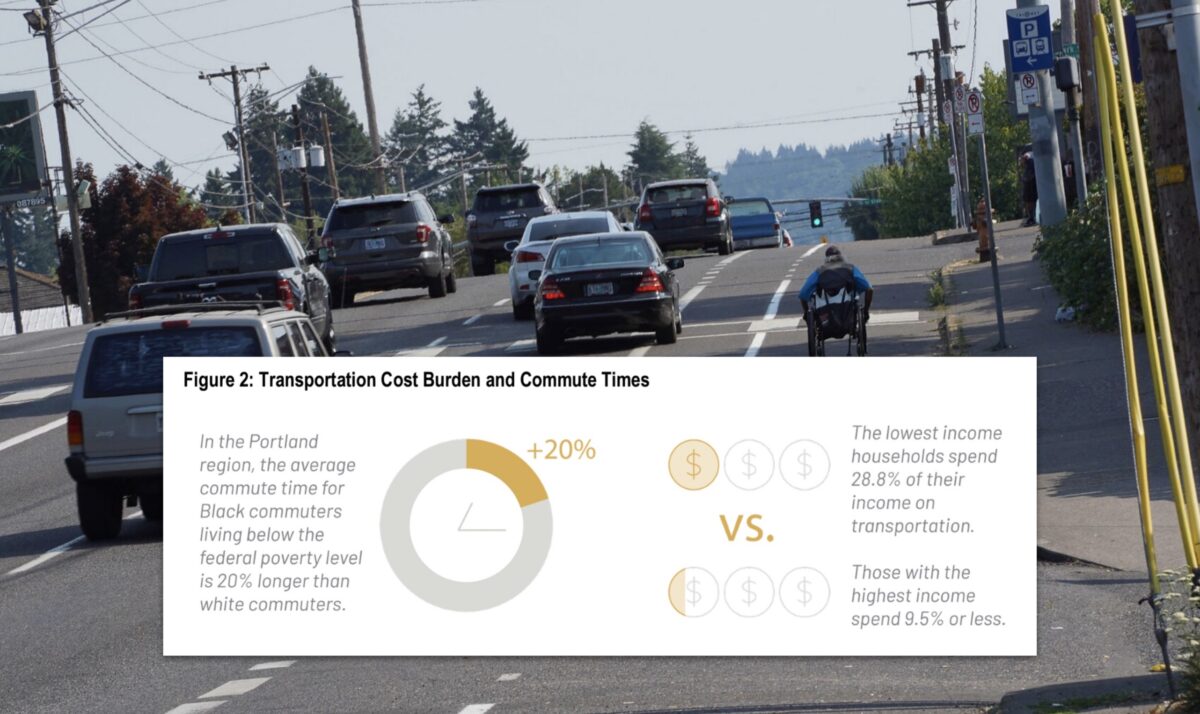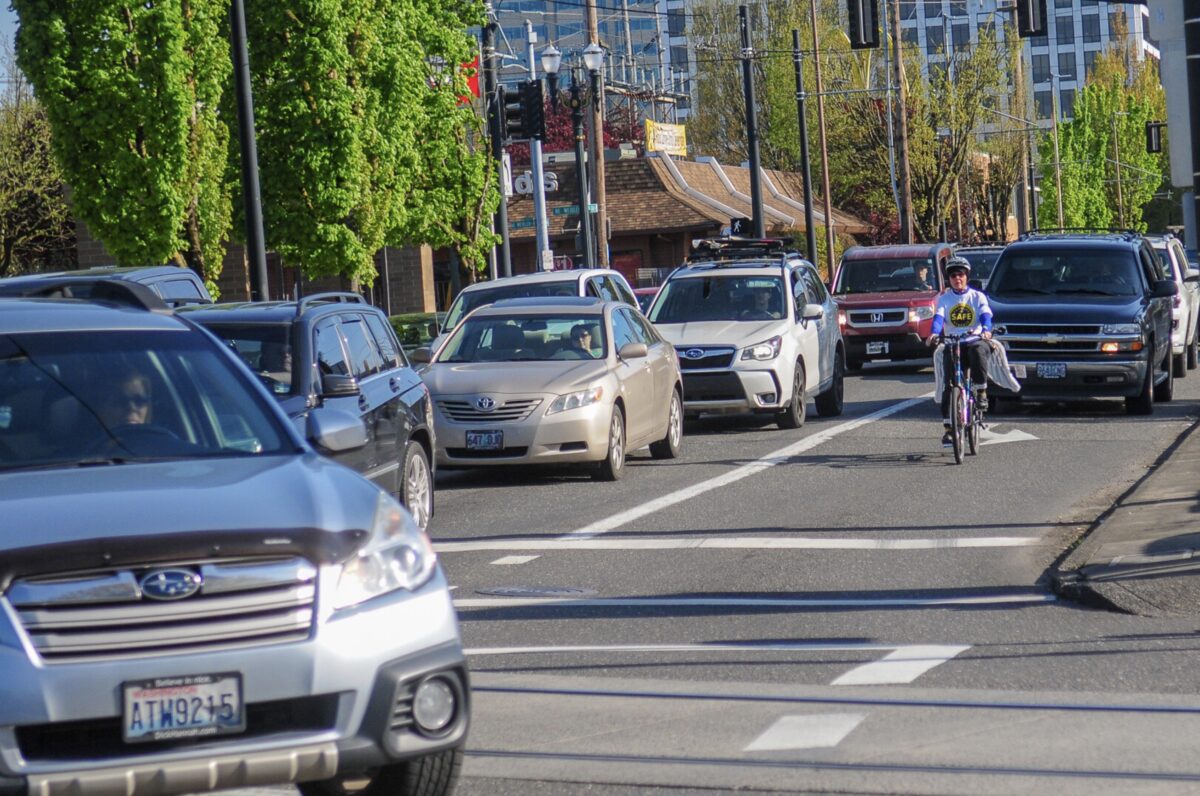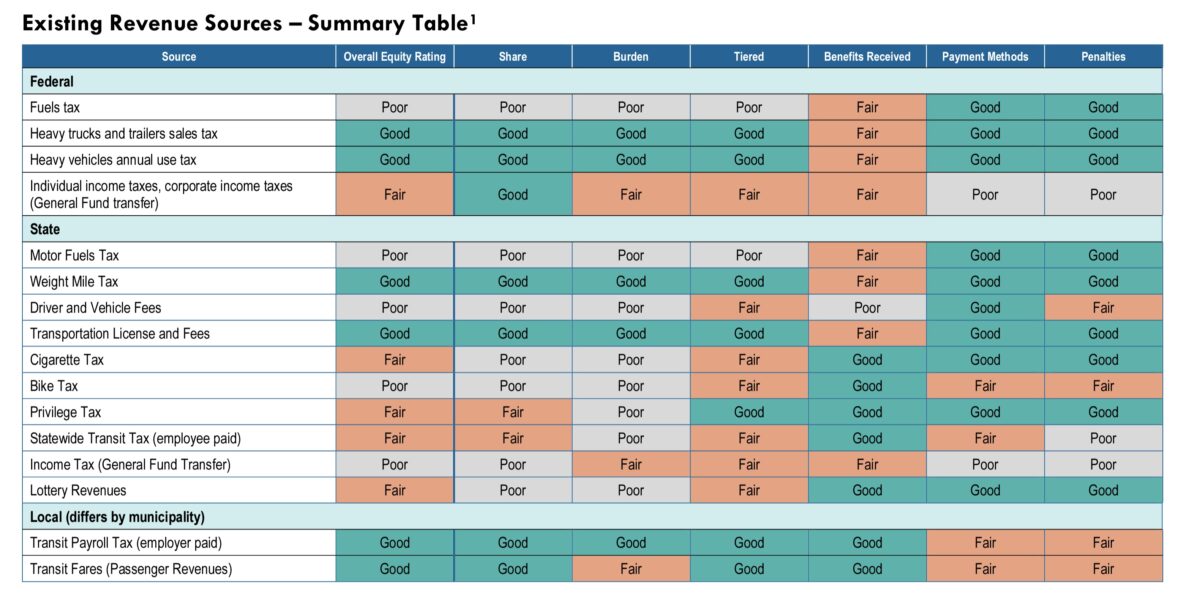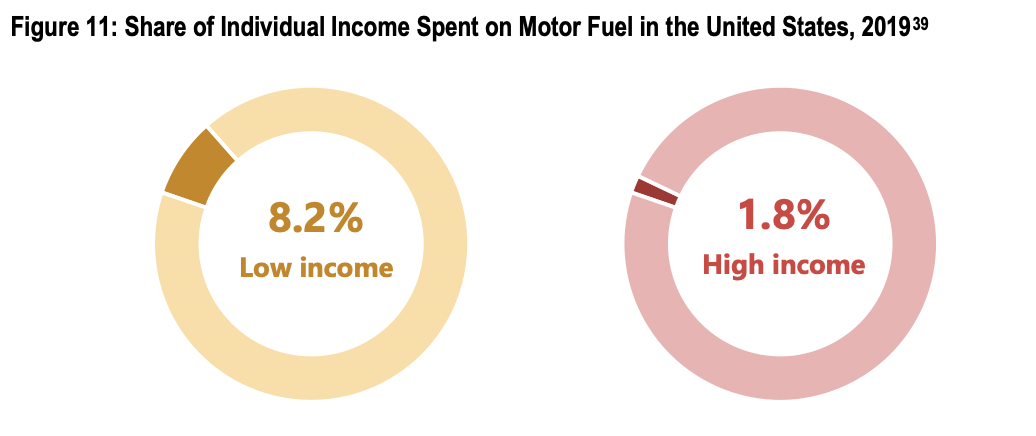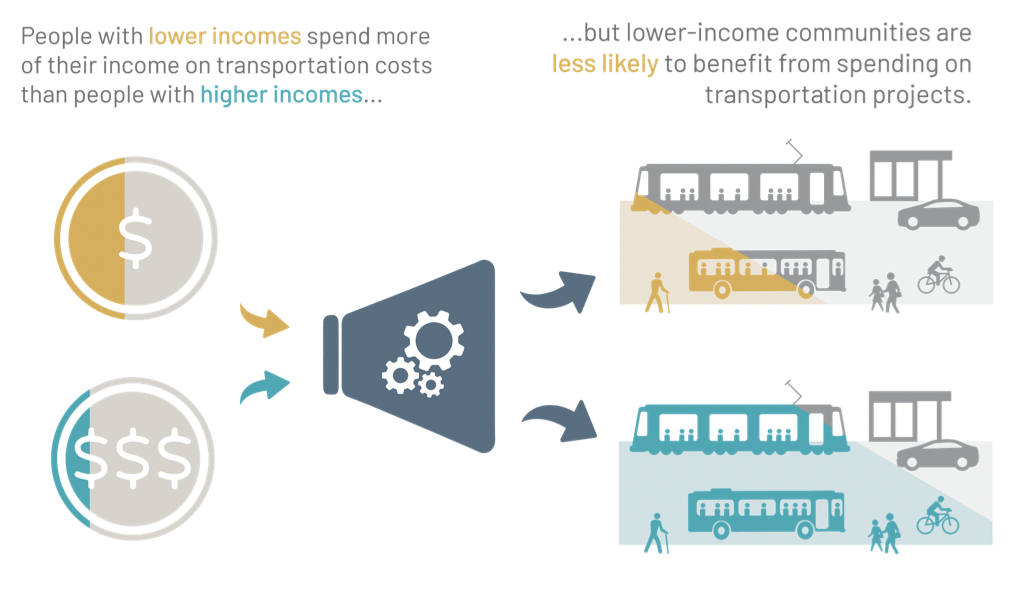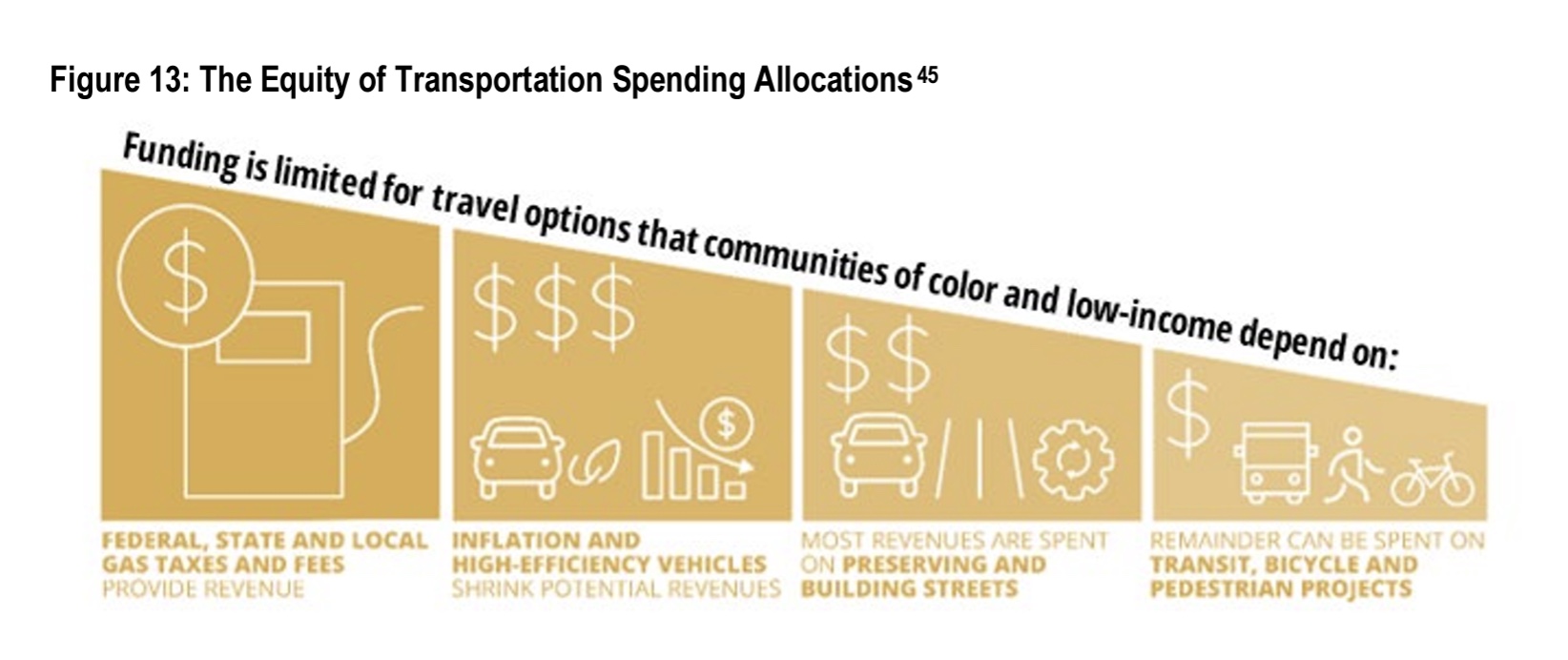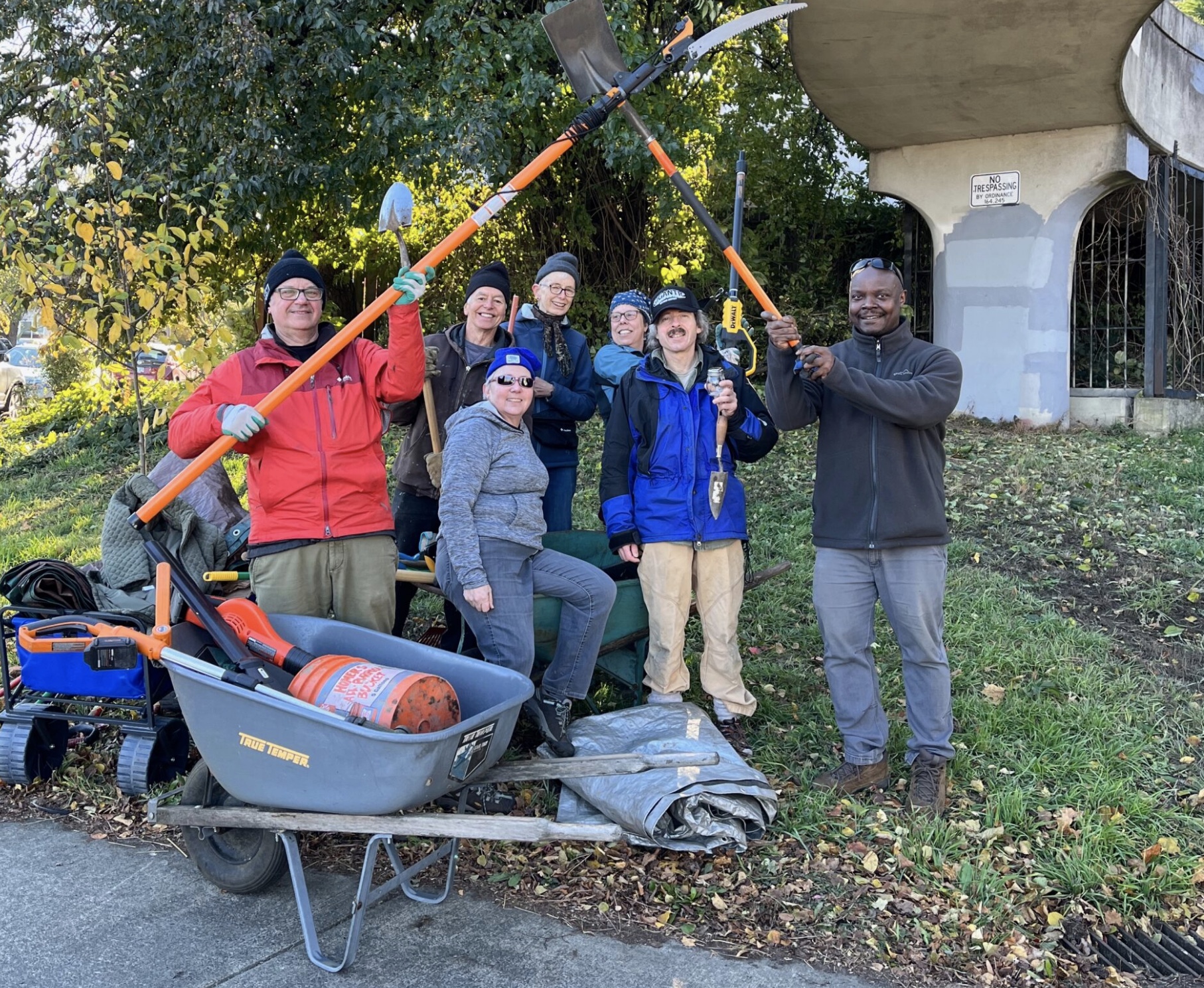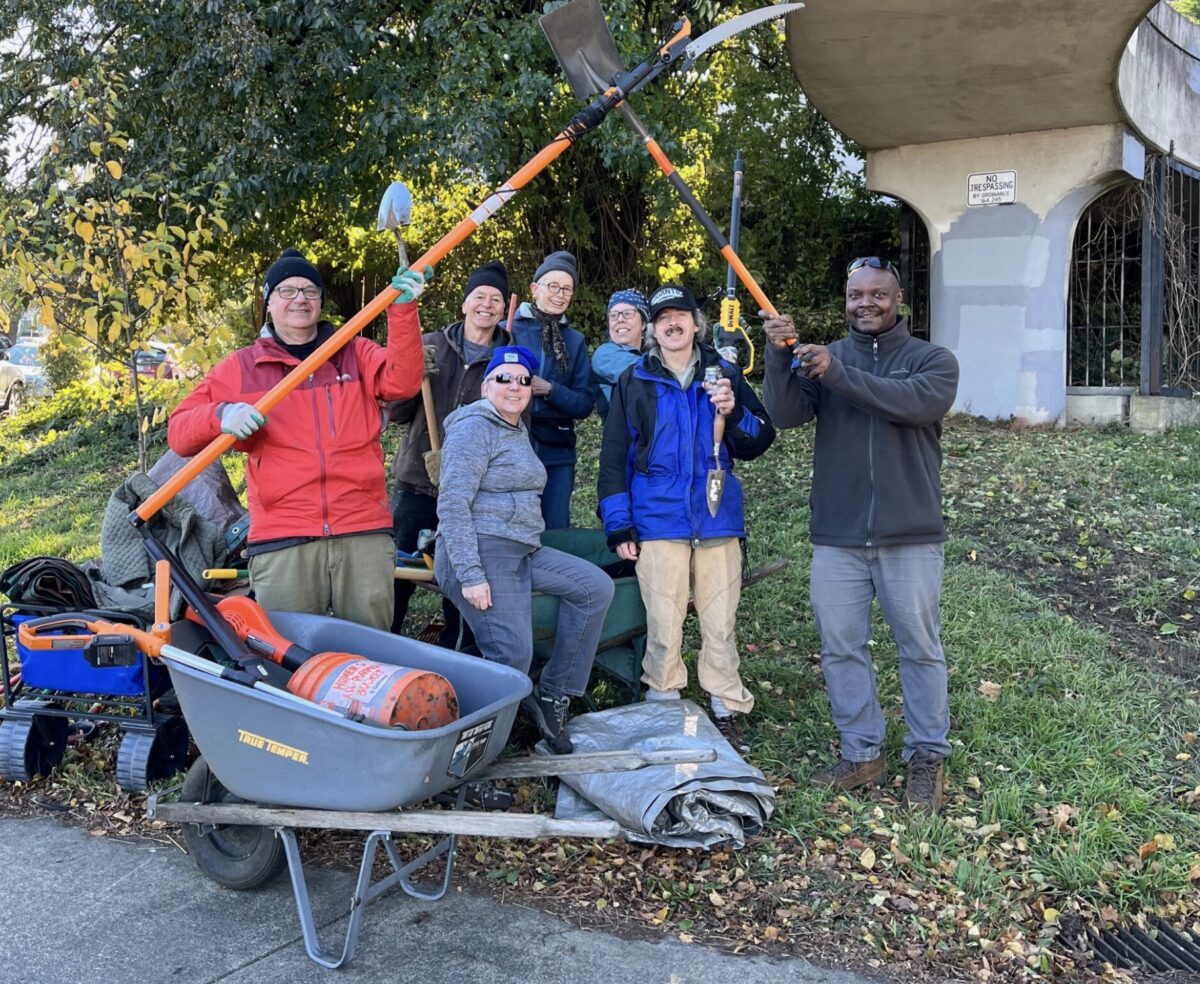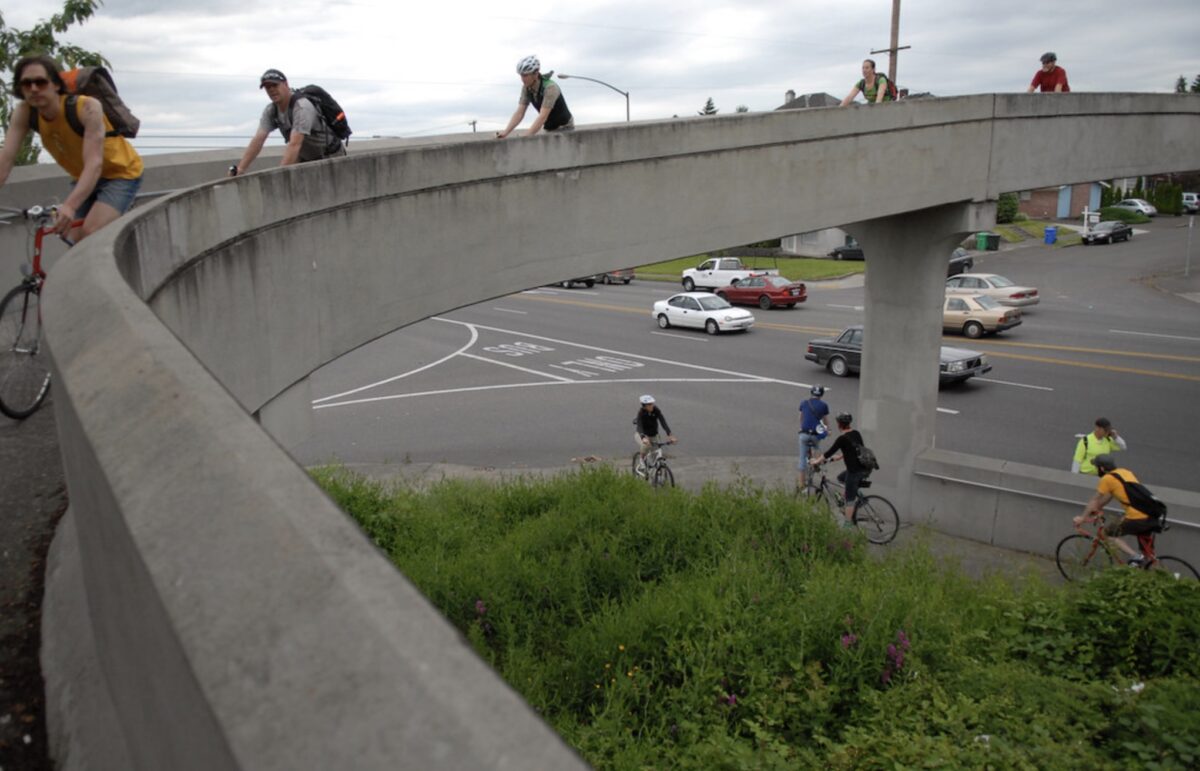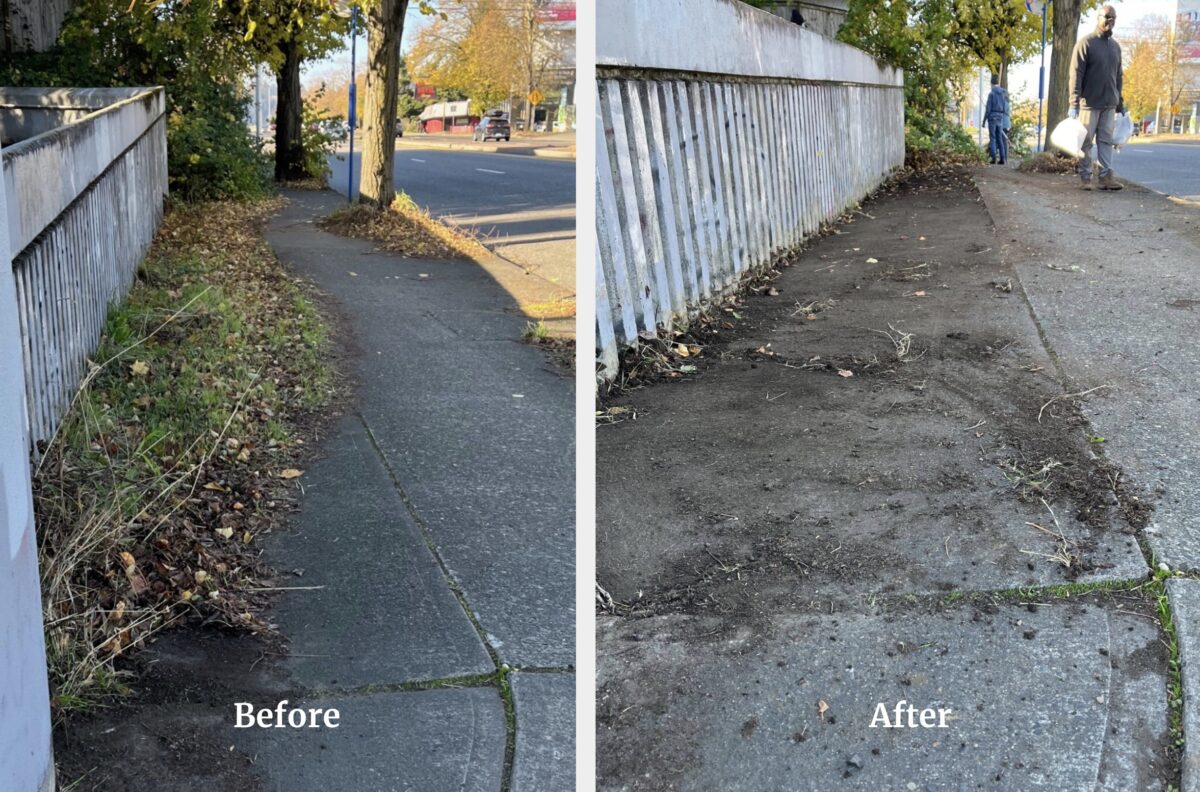The Oregon Department of Transportation is currently in the process of updating the Oregon Transportation Plan, which will map out our state’s transportation system through the year 2050. ODOT wants to take a more hands-on approach to getting Oregonians involved this time around — so they’ve made a quiz to test your knowledge of the plan. (It’s pretty easy to get all the answers right, just in case you need a little win today.)
ODOT embarked on the majority of its public feedback process for the OTP update last year, using the input they received to come up with six goal areas for the plan. These goals are as follows:
Economic and Community Vitality – Improve prosperity, opportunity, and livability for all people who live, work, and recreate in Oregon.
Social equity – Improve access to safe and affordable transportation for all, recognizing the unmet mobility needs of people who have systemically excluded and underserved. Create an equitable and transparent engagement and communications decision-making structure that builds public trust.
Mobility – Create a resilient multimodal transportation system that enables the diverse range of community members and businesses with different needs to get where’re they need to go safely, reliably, and affordably, and with minimal environmental impact.
Stewardship of Public Resources – Guided by open, data-driven decision-making processes, secure sufficient and reliable revenue for transportation funding and invest public resources to achieve a resilient and sustainable multimodal transportation system.
Safety – Enable safe travel for al people, regardless of their age, ability, race, income, or mode of transportation.
Sustainability and climate action – Minimize transportation’s negative role in climate change by reducing greenhouse gas (GHG) emissions for all sectors of transportation, while also reducing air toxics, noise pollution, water toxics, and habitat loss.
Now, ODOT is looking for feedback about which funding scenario they should follow to best meet these goals. They provide four different possibilities with space for public comment. These funding scenarios are:
Scenario 1: Focus on Equity and Climate Change
Scenario one prioritizes investments for walking and biking, transit, and fleet electrification with a focus on providing low-cost transportation options, especially in urban areas. The goal of this scenario is to reduce negative climate impacts of transportation and reduce costs for transportation.
Scenario 2: State of Good Repair
Scenario two prioritizes investment in our existing infrastructure to make it more resilient and effective. Our roadways, rail, and transportation infrastructure are being improved with more bridges, are being seismically retrofitted, and are less likely to be closed due to storm events. Culverts are being replaced, reducing the likelihood of washouts, and innovative infrastructure helps get the most out of the infrastructure we have today.
Scenario 3: Travel Options
Scenario three maximizes non-auto options through increasing investments in more frequent and convenient transit both with inter- and intra-city travel as well as biking, walking, and electrification of infrastructure.
Scenario 4: Balanced
Scenario four would balance the many different priorities equally, resulting in improvements in many modes.
But wait — there’s more! If you want to learn even more about the OTP, there are more than a dozen videos on ODOT’s YouTube channel where you a range of Oregonians will break it down for you and explain how it connects to their personal lives. BikePortland readers may recognize a familiar face in one of these videos which features The Street Trust’s André Lightsey-Walker.
You can take the quiz and give ODOT your thoughts on funding scenarios by going to the Explore OTP webpage. There will also be a chance to submit public comment before the next ODOT Policy Coordinating Committee meeting on December 14th — find out more here.



